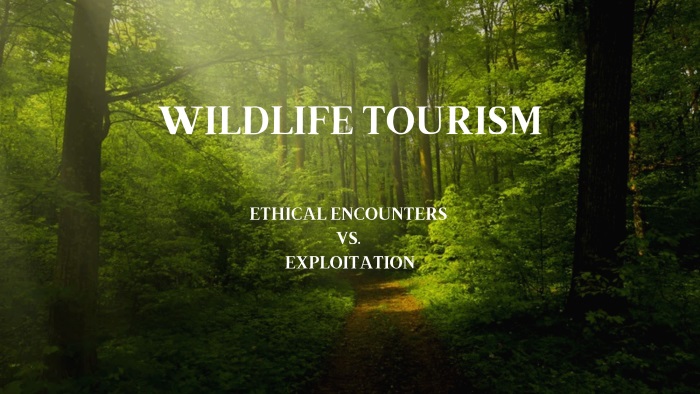The allure of observing majestic animals in their natural habitats has fueled a global surge in wildlife tourism. While this industry can foster conservation awareness and generate vital funds for ecosystems, it also harbors a dark side: the exploitation of animals for profit. For wildlife enthusiasts, distinguishing between ethical encounters and harmful practices is crucial to ensuring their adventures support—not harm—the creatures they admire.
The Promise of Ethical Wildlife Tourism
Ethical wildlife tourism prioritizes animal welfare, conservation, and education. Responsible operators focus on minimal human interference, allowing animals to thrive in their natural environments. For example, reputable sanctuaries rescue injured or orphaned wildlife, rehabilitate them and often release them back into the wild. These facilities avoid breeding programs or forced interactions, instead offering observation-based experiences that educate visitors about species conservation.
Ecotourism initiatives, such as guided safaris or whale-watching tours, also exemplify ethical practices. These tours adhere to strict guidelines—maintaining safe distances, limiting group sizes, and training guides to prioritize animal behavior over tourist satisfaction. By channeling profits into habitat preservation and anti-poaching efforts, such programs create a sustainable cycle of protection. Additionally, ethical tourism often partners with local communities, providing jobs and incentivizing conservation over exploitative practices like logging or hunting.
The Shadows of Exploitation
Conversely, exploitative wildlife tourism commodifies animals, treating them as photo props or entertainment. Venues offering elephant rides, tiger selfies, or dolphin shows often subject animals to cruel training methods and deplorable living conditions. A 2023 World Animal Protection report revealed that over 550,000 animals worldwide endure chronic stress in tourism venues. Elephants, for instance, are frequently torn from their mothers, beaten into submission, and chained when not performing. Similarly, big cats in “petting zoos” are often sedated to ensure passive interactions, while marine parks confine highly intelligent dolphins to cramped tanks.
These attractions thrive on misinformation. Tourists, eager for close encounters, may unknowingly support industries that prioritize profit over welfare. The cycle of exploitation persists as demand fuels breeding programs and illegal wildlife trafficking, further endangering vulnerable species.
How to Choose Ethical Experiences
- Research Thoroughly: Investigate venues before visiting. Ethical organizations are transparent about their missions, often holding certifications from groups like the Global Federation of Animal Sanctuaries (GFAS) or the Association of Zoos & Aquariums (AZA).
- Avoid Direct Interaction: Steer clear of activities allowing touching, feeding, or riding animals. Wild animals are not domesticated; forced interactions indicate stress and unnatural training.
- Observe Animal Behavior: In the wild or sanctuaries, animals should display natural behaviors—hunting, socializing, or resting. Signs of stress (pacing, aggression) or sedation (lethargy) are red flags.
- Support Conservation-Centric Tours: Choose operators contributing to research or habitat protection. For example, sea turtle conservancies often use tour fees to fund nesting site preservation.
- Educate Others: Share ethical guidelines on social media and discourage peers from supporting exploitative attractions.
The Role of Social Media
Social media’s influence cannot be understated. While platforms have exposed unethical practices, they also glamorize harmful encounters. A selfie with a captive animal may garner likes, but it perpetuates demand for exploitation. Wildlife enthusiasts should instead promote content showcasing animals in the wild or ethical sanctuaries, using hashtags like #EthicalWildlifeTourism to spread awareness.
Wildlife tourism sits at a crossroads: it can either uplift conservation efforts or accelerate species decline. By choosing ethical encounters, travellers empower sanctuaries, protect ecosystems, and inspire industries to adopt humane practices. As stewards of the planet, our curiosity about the natural world must be matched by a commitment to preserving it. Every decision to support ethical tourism is a step toward a future where humans and wildlife coexist—respectfully and sustainably.
Let your adventures leave footprints of compassion, not exploitation. The wild deserves nothing less.





